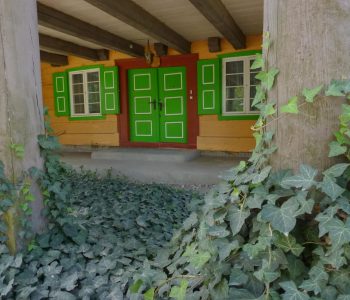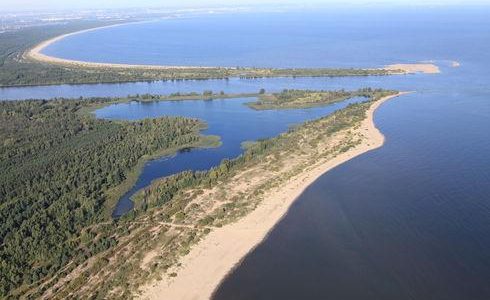The plan behind the Vistula Cycling Route is to build a cycling route along the entire length of Poland’s longest river, which would run in part along flood embankments. Aside from magnificent, natural landscapes characteristic of Vistula banks, the route also provides a sort of time-travel experience. Regional countryside architecture passed along the way, such as arcaded houses, wooden huts, or wooden and brick churches are to be seen in many villages of Żuławy region. Their history is long, reaching deep into the Medieval times.
Pearls of Gothic architecture
The route is filled with pearls of brick, Medieval architecture that invite tourists. Some of these characteristic buildings have already become tourist products, among them: the Cistercian cathedral in Pelplin, castles of Teutonic Knights in Malbork, Gniew, and Sztum, or the monumental castle and cathedral complex in Kwidzyn. Their offer isn’t limited merely to sightseeing, but instead includes rich variety of attractions with accommodation, spectacular stagings and re-enactments, and fairs.
Despite not being officially functional yet, the route along Vistula River can be traversed using local low-traffic public roads, fragments of flood embankments, and existing cycling routes.
The first part of the route, from Gdańsk to Tczew, leads through Żuławy Wiślane. The eastern peripheries of Gdańsk, Cedry Wielkie and Suchy Dąb communes, are lowland areas situated in the former delta of Vistula River, which underwent re-development by Teutonic and Mennonite settlers. The route takes us along numerous canals and Martwa Wisła (literally: Dead Vistual) riverbed, which today is the main estuary of Poland’s longest river, along flood embankments and asphalt roads, among fields, meadows, and willows planted in characteristic rows.
How did it use to work? How did they use to live?
During your ride, you can admire achievements in hydropower technology of many generations of past settlers, arcaded and half-timbered houses, or picturesque, Medieval churches.
The left bank part of the route from Tczew to Opalenie lies in Kociewie region, a land of multi-cultural tradition and history. On the way, you will see historical truss bridges, a magnificent panorama of the river that can be admired from the Vistulan boulevard. You can also take a tour of Tczew, and later enter the magnificent church in Gorzędziej, while admiring the unique view of the Vistula River.
Visiting the Knight Commander
Make sure to stop by Gniew and tour the former castle of the Teutonic Knights, and the city’s pretty Old Town. Several kilometres south, you are going to reach a modern bridge that leads to the other side of the river, and further towards Kwidzyn. After crossing the bridge, you will turn back north and enter Powiśle region. The attractions that await cyclists include: the castle and cathedral complex in Kwidzyn, picturesque panorama of the opposite, high bank of Vistula, hydrotechnical building complex in Biała Góra, or small churches and lovely settlements scattered along the embankment.
Entering the Vistulan area of Malbork and Nowy Dwór communes will take you back to lowland parts of the river’s delta. Visiting at least one of the many preserved Mennonite cemeteries is a must. So is taking a peek inside one of the typical local farms or wooden mills. Numerous bridges, locks and marinas can be found here. Before departing on a ferry back to the left bank of Vistula, to Świbno, you can enter the sandy beaches of the Vistula Spit that will take you far, straight to the border of Kaliningrad Oblast.














